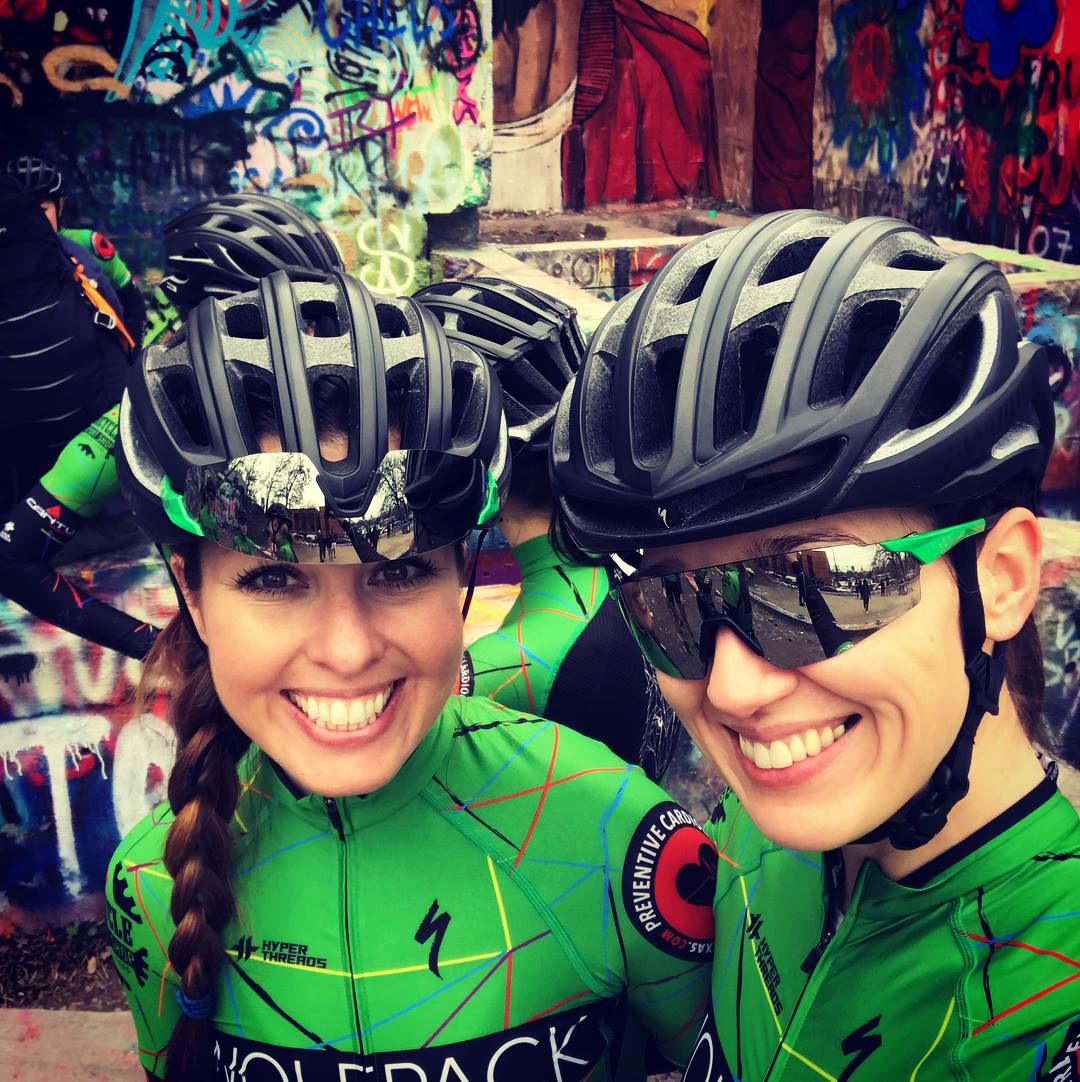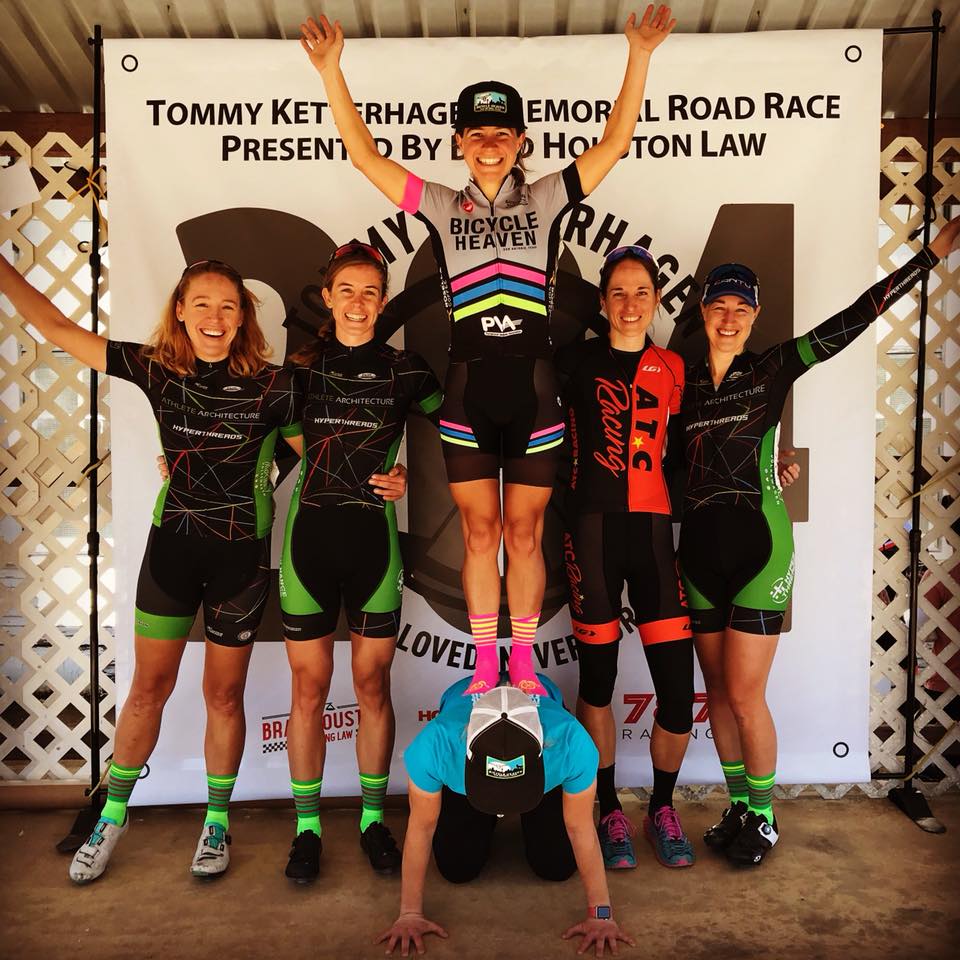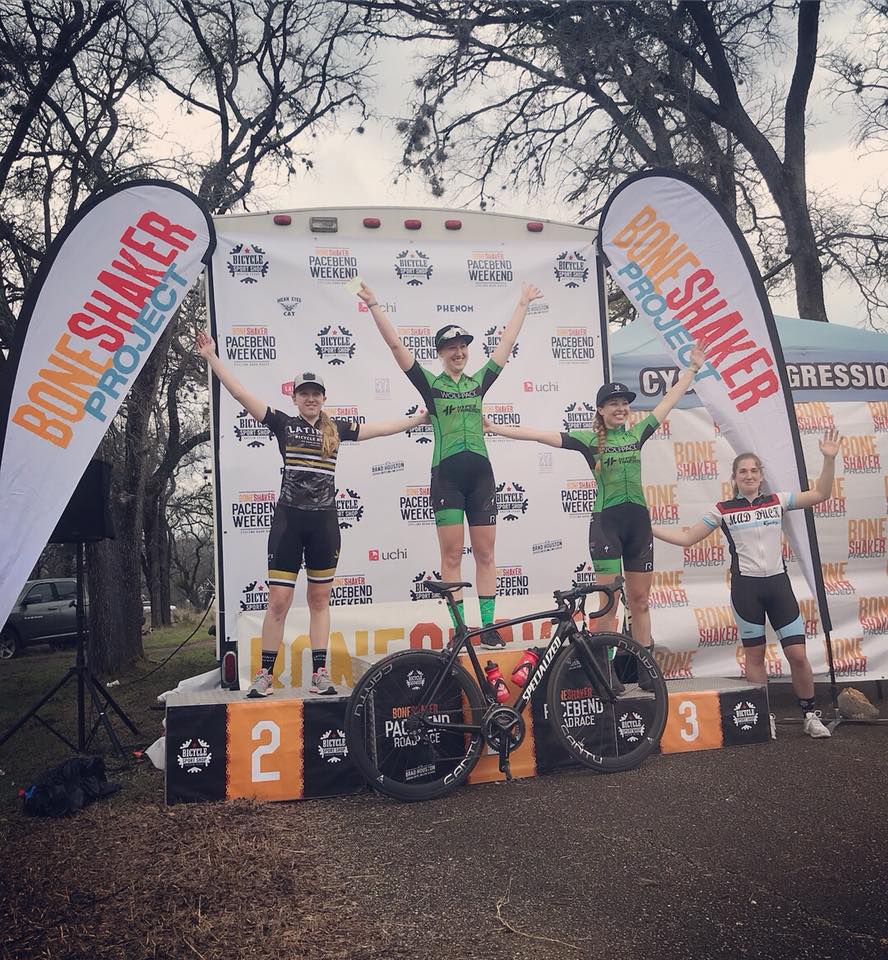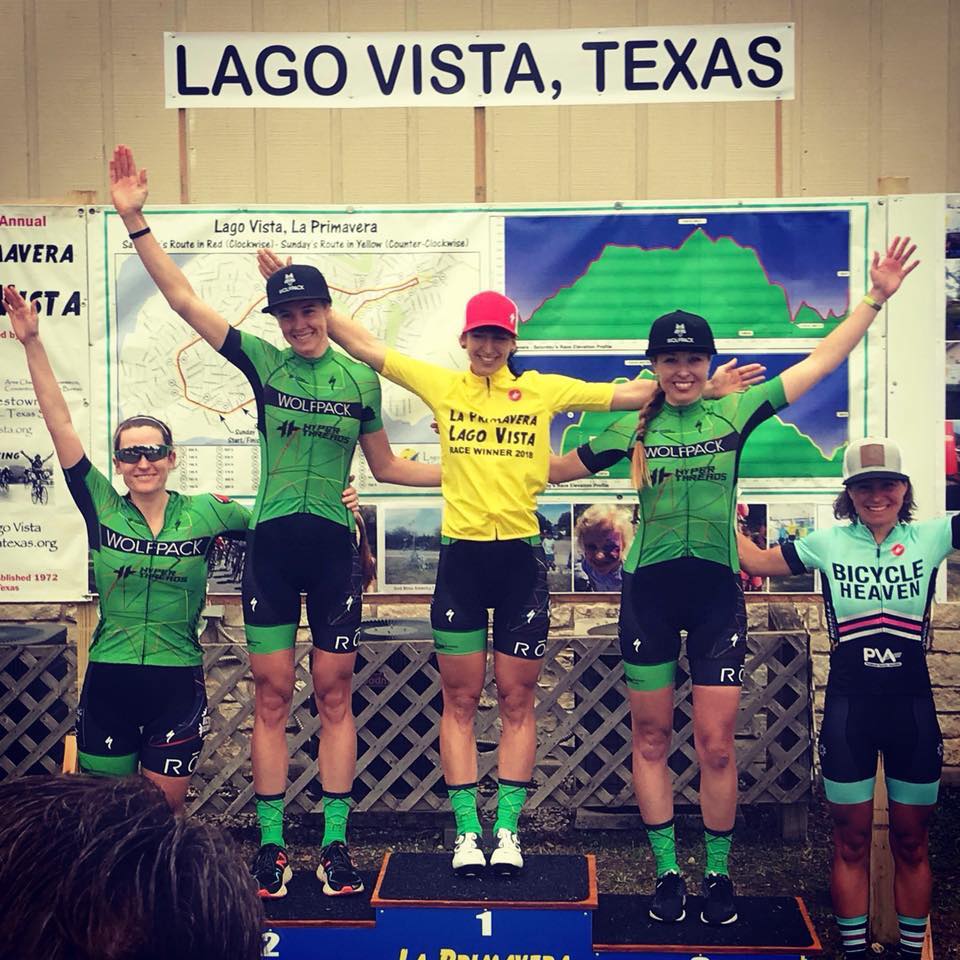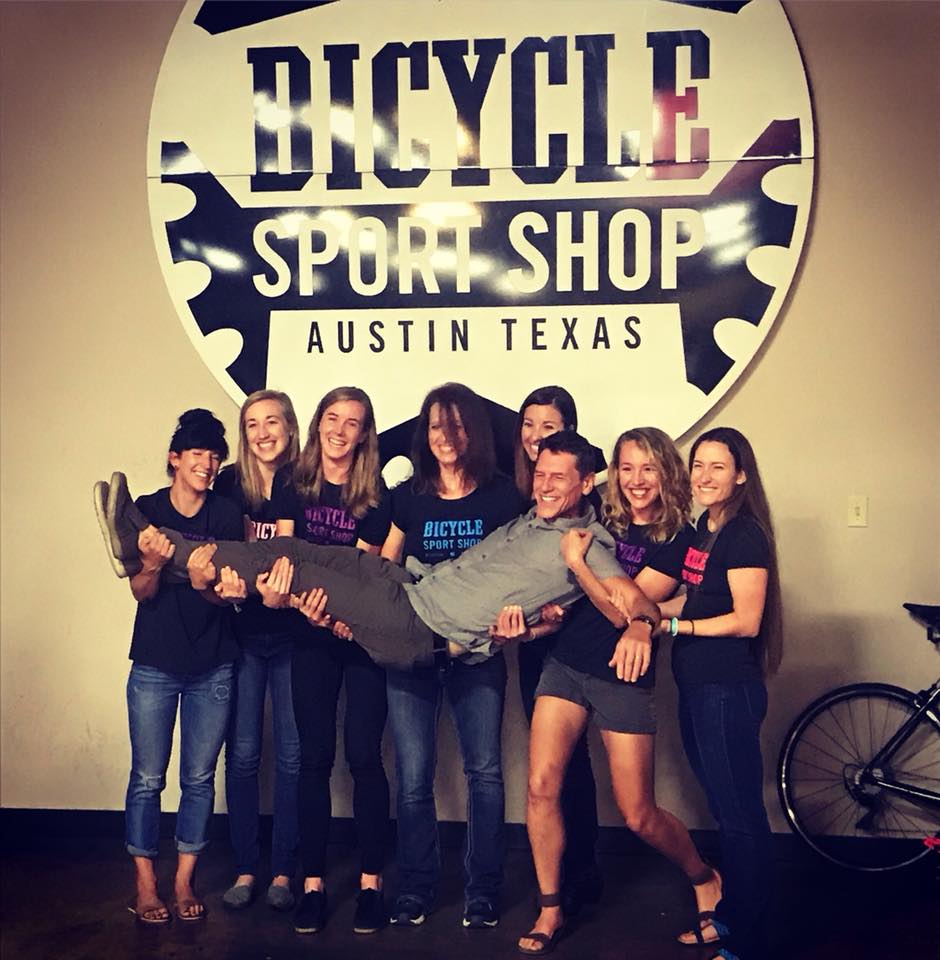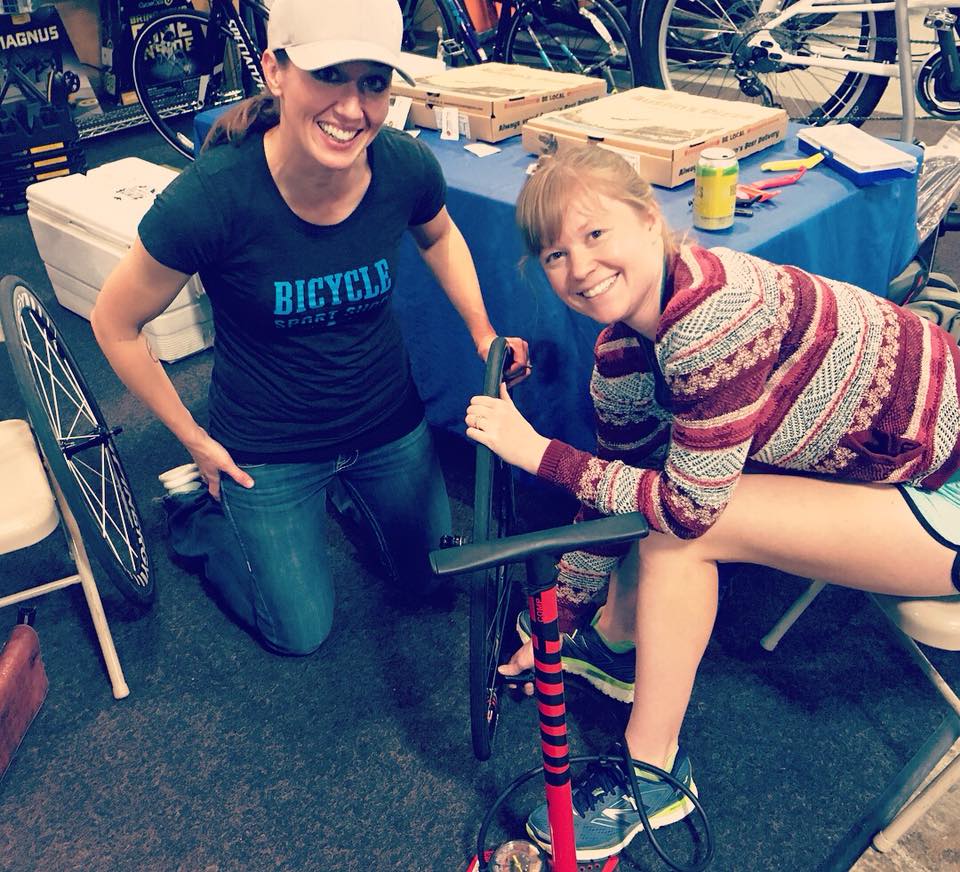Featured Interview with Kelly Barrientes, Team Manager of Wolfpack p/b Hyperthreads
/Wolfpack p/b hyperthreads Photo credit: Michael Johnson
If you live in the Austin area or have traveled to a recent Spring Classic race in Texas, there's a good chance you've come across these fast racers in green and black aka the women of Wolfpack. They have kicked off road season with a bang, recently stepping up to multiple podiums in the Pace Bend and Lago Vista road races. What also makes us proud as sponsors is what they continue to do for women's cycling. Created in the Fall of 2014, Wolfpack has developed into a solid 8 women elite squad and 10 women club team out of Austin, Texas. Giving back to the sport, this team sets a great example for any women looking to get into cycling or starting a team. We interview Wolfpack Team Manager, Kelly Barrientes to learn more on what Wolfpack is all about.
kelly Barrientes, wolfpack team manager Photo credit: Michael Johnson
Cantu Cycling Wheels [CW]: Kelly, thank you for taking the time for this interview. To begin, what sort of sporting background did you have growing up?
Kelly Barrientes [KB]: I was a jack of all trades and a master of none! I loved competing, and was lucky to go to a very small school where I could be involved in any sport I wanted. I ran track (very slowly), played basketball, ran cross country, and played volleyball.
CW: When did you take up cycling and what got you into it?
KB: I was an aerobics coordinator for LA Fitness and my cycle instructor quit and I had to start teaching the class. I had only taken one cycling class in my life and had HATED it. The teacher was playing show tunes and it was torture. Once I started teaching the class, I fell in love. About a year later one of my friends told me to quit being a poser and ride out on the road. One Sunday we went on a 20 mile ride and the next day I bought my first road bike. Three months later I started racing!
CW: When and how did the team Athlete Architecture/Wolfpack get its start?
KB: I had been on a women’s only team based in Ft. Worth that was going to merge with a men’s team. I was living in Austin and felt very strongly that I wanted to be part of a women’s only team, so I called up my coach (Chris Toriggino with Athlete Architecture) and asked him if I could start my own team and wear his kit. It was super late to start a team (November 2014), but I managed to convince the girls to join me on this new adventure and never looked back!
CW: What does the roll team manager entail? What do you enjoy about the team dynamics?
KB: I’m basically the team mom! I handle securing sponsorships and maintaining sponsor relations, team finances, selecting team members, coordinating our major races outside of Texas, support at races, basically doing what I can to make the girls lives easier so they have the freedom to train, show up, and crush at races! I couldn’t be happier with the group I have. The girls work so incredibly well together. It’s a well oiled machine. I’ve been lucky to have kept the same girls I started with and have hand picked the ones I’ve added over the years with a focus on personality and how they would gel with the other teammates. I genuinely love each and every girl on this team, and it makes my job so much easier!
CW: What are some challenges you’ve come across when creating a team?
KB: I would say the biggest challenge for me is finding time to do it all. I’m a mom of two boys, a wife, and work a full time job, so finding time to manage the team and make it look relatively easy has required many late nights and lots of tears lol. My poor husband. I’m also actually super introverted and tend to stay very much to myself. It has been very difficult at times to open myself up and assume that PR role that being a manager entails. I have grown immensely the past year and couldn’t/wouldn’t do it if it weren’t for the support of my family and the girls.
CW: What inspires you throughout the journey as a team manager?
KB: Seeing the girls race together is such an inspiration. I believe in them and know together they can accomplish anything. There is nothing like seeing them kitted up, rocking the wolf logo, knowing they believe in this dream of mine as much as I do.
CW: We’re extremely impressed by the commitment of each rider on the team. Tell us a little bit of about how your riders are able to balance a work and racing schedule.
KB: These girls are amazing. They will get up at 5 in the morning to train for a few hours before heading off to their jobs or school. A lot of times they’ll incorporate their commute into their training plan. They’ve been super motivated this season, in part due to the USA Crits series the team is involved in.
CW: Can you give us a quick overview on some of the big races you’ll be traveling to this year?
KB: So many exciting things are in store! One of the biggest races on our schedule is Joe Martin Stage Race in April. This is a UCI race, so many of the pro teams will be battling it out on the hills in Fayetteville, Arkansas. We are also going to be one of the 10 D1 teams to race in the USA Crits Series.
CW: Congratulations on being a part of USA Crits! Can you tell us more about the series and #racefororange?
KB: Thank you!!! We are so excited about being a part of this incredible program. We will be one of 10 “D1” teams participating in this series. This is USA Crits 11th year and what they do is kind of piggy back on to some very well established criterium races all over the country, such as Athens Twilight, Oklahoma City Pro Am, and Gateway Cup. We will be competing against 9 other teams for a part of the $50,000 purse for the women alone. What sets this series apart is the ability for our friends, family and supporters to watch us via live stream for each of these races. Look for the link to subscribe so you can watch us toe the line and compete for the leader’s jersey!
CW: What are some team goals you have this year that you can share?
KB: Mainly to continue to gel and show our competitors we aren’t here to just show up, we’re here to race.
CW: Off the bike, your team gives back to the cycling community through hosting bike maintenance and racer clinics to rides. Tell us more about that and how important it is.
KB: We have been super lucky to have partnered with Bicycle Sport Shop here in Austin for this season. They are well known for their support of the Austin cycling community and especially for women cyclists. I remember when I first started riding I was completely clueless about how to take care of my bike, what to do when I got a flat, how to ride, how to race. It was overwhelming, and had I not had a few great friends to guide me along the way (and a stubborn ‘I can do anything’ attitude) I would have been lost in the shuffle and my bike would have collected dust in my garage. It’s very much a male dominated sport. A lot of times women racers can appear unapproachable to beginner female cyclists. What I have loved about hosting these clinics with Bicycle Sport Shop is:
They have locations all over Austin. We aren’t just limited to women in the downtown area! We can reach those who live north of Mopac and 183, and even in the suburbs of Cedar Park, Round Rock, and Leander!
We all have things to learn. After racing and riding for 8 years, I have learned something new at every maintenance/race clinic we’ve held.
This whole process has been so empowering to these women. I have received many messages from the participants saying how much more comfortable they feel taking care of their bike and how motivated they are to ride harder, ride longer, and ride smarter.
CW: Where do you want to see women's cycling progress a year from now?
KB: My dream is to have at least twice as many women out there riding their bikes! I would LOVE to see more women “opt outside”, more women’s events, more competitive women’s only teams. I get so excited when I see these women’s teams popping up on the scene.
CW: What has been the best advice you’ve been given?
KB: “Walk as if.” If you want something, assume it’s yours and claim it.
CW: If someone was interested in starting a team, what are some important factors to take into consideration?
KB: Personalities are number one. Having people that you could ride with for 100 miles and still want to hang out with for some grub afterwards is key. Also, set a precedence for your team. A lot of racers out there have the mentality of “what can you give me?” Turn that around and have the racers focus on how they can give back to their sponsors. We wouldn’t be where we are without their support.
CW: Where can people follow you and the team?
Watch us race at http://usacrits.tv/
Follow us on Facebook at https://www.facebook.com/WolfpackRacingATX/
Instagram @teamwolfpackracing
Twitter @atxwolfpack
Website (coming soon!!!) atxwolfpack.com
Thank you for your time! We look forward to cheering you on and wish you and the team the best of luck this season!
Photo credit: Michael Johnson


